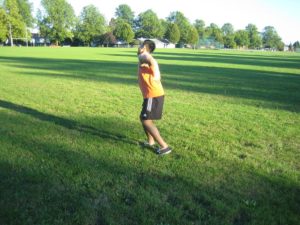A tailbone injury can cause discomfort among athletes. The recovery time tends to vary on the extent of damage, but some measures can hasten the healing process.
The injury is generally brought about by direct fall on the coccyx. The seriousness of the damage can vary from a bruise to a broken bone. In some sporting events such as rowing or cycling, there is a high possibility of coccyx pain due to repeated weight or friction on the bone. The compression of a nerve or bone spur might trigger discomfort in the site of the coccyx.
What are the signs?

The usual indications of a tailbone injury include pain and tenderness while sitting or placing direct pressure on the coccyx.
The pain that arises while sitting might intensify while leaning moderately backwards due to the elevated pressure on the coccyx or if being seated on soft surfaces. The discomfort during bowel movements is also common. There is even evident bruising often seen above the tailbone.
An X-ray will not always display a tailbone injury, but the doctor might request one while in standing or sitting position to determine the extent of damage and note down any alignment issues or other injuries such as dislocations or fractures.
Management of tailbone injury
In most cases of tailbone injury, they recuperate over time with self-care measures. Since the injuries can be quite painful, conservative treatment at home can lessen the pain and avoid further damage as it heals.
Some of these measures include:
- Avoiding prolonged periods of sitting. If the individual can stand during the day, it is suggested. If there is a need to sit, opt for a hard surface and lean forward to relieve the pressure from the tailbone. A “doughnut” cushion with a hole in the center can lessen the pressure while sitting.
- High-fiber foods must be included in the diet along with an increase in the intake of water to soften the stools to allow easier bowel movements.
- Application of ice on the tailbone region for 10-15 minutes several times throughout the day up to 3 days to lessen the pain.
- An over-the-counter pain medication can be given to lessen the pain and inflammation.
- If there is significant discomfort, the doctor might prescribe stronger pain medications or decide to inject a local anesthetic into the coccyx to reduce the pain.
A bruised tailbone might take several days to weeks to fully heal. As for a fractured tailbone, it takes 4-6 weeks to heal. Generally, the individual can resume activity steadily as he/she heals.
More Information / Disclaimer
The information posted on this page on tailbone injury is for learning purposes only. Learn to recognize the signs and how it is managed by taking a standard first aid course with Toronto First Aid.
